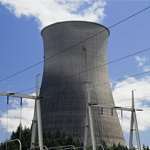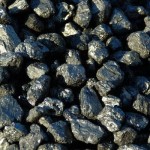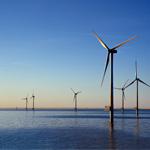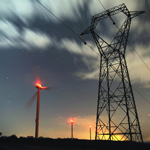 A coalition of eight leading European energy companies has written a letter to the European Commission and Presidency of the European Council calling for legally binding 2030 targets for renewable energy, carbon cutting and energy efficiency as well as for the modernisation of energy infrastructure.
A coalition of eight leading European energy companies has written a letter to the European Commission and Presidency of the European Council calling for legally binding 2030 targets for renewable energy, carbon cutting and energy efficiency as well as for the modernisation of energy infrastructure.
The letter was signed by SSE, Eneco, DONG Energy, Public Power Corporation, ACCIONA, Sorgenia, EWE and EDP Renewables.
“The lack of binding targets post 2020, an ETS [Emissions Trading System] failing to stimulate investment in renewables, and an outdated energy infrastructure severely threaten to wreck the needed modernisation and decarbonisation of the European energy sector,” the letter published by Euractiv says.
continue reading »
 Those who wonder why it seems to take governments so long to go about tackling climate change should be aware of recent stories linking a US non-profit foundation with deliberate attempts to pretend global warming isn’t nearly as serious an issue as most scientists say it is.
Those who wonder why it seems to take governments so long to go about tackling climate change should be aware of recent stories linking a US non-profit foundation with deliberate attempts to pretend global warming isn’t nearly as serious an issue as most scientists say it is.
Media outlets and websites have been reporting the past week about leaked documents from the Heartland Institute, a Chicago-based libertarian think tank that aggressively downplays the existing and potential ravages of climate change.
continue reading »
 Some strange news has emerged from the World Coal Association recently: the WCA claims that wind turbines use a large amount of coal during their production. At the European Wind Energy Association we recognise that energy is needed during the manufacturing and transport of wind turbines as well as during installation site works, but the amounts suggested by the WCA are way above the reality.
Some strange news has emerged from the World Coal Association recently: the WCA claims that wind turbines use a large amount of coal during their production. At the European Wind Energy Association we recognise that energy is needed during the manufacturing and transport of wind turbines as well as during installation site works, but the amounts suggested by the WCA are way above the reality.
In fact, a wind turbine consumes less than 1g of coal per kilo-Watt hour of electricity produced over its full lifecycle. A coal plant, meanwhile, will consume over 300 times this amount per kWh of electricity, assuming a 40% average efficiency. Moreover, one wind turbine pays back the coal it uses during production with just one month of operation. Looking at all fossil energies used during the lifecycle of a wind turbine, the ‘fossil fuel debt’ ranges from 3-8 months of turbine operation. continue reading »
 Wind energy made a splash in many media sources this week with news that the sector continues to grow despite the economic gloom gripping Europe. Here’s a short round-up of what the papers said:
Wind energy made a splash in many media sources this week with news that the sector continues to grow despite the economic gloom gripping Europe. Here’s a short round-up of what the papers said:
This week the European Wind Energy Association (EWEA) released new data showing that the wind energy sector in Europe added 9,616 MW of new wind energy capacity last year – making up over a fifth of total new power installations, the Guardian reported. The EWEA points out that the industry has delivered an average annual growth of almost 16% over the last 17 years, the article adds.
continue reading »
 With more than 450 people dying as of Tuesday because of the freezing temperatures currently sweeping Europe, news reports that Russia has reduced its natural gas supplies to some European countries once again highlights the problems of security of supply of imported fossil fuels.
With more than 450 people dying as of Tuesday because of the freezing temperatures currently sweeping Europe, news reports that Russia has reduced its natural gas supplies to some European countries once again highlights the problems of security of supply of imported fossil fuels.
European policy makers can’t do anything about the punishingly cold polar air that is expected to hover over the region for at least another week, but they can make sure that proposals currently before the European Parliament and Council of Ministers to speed up the permitting, and assist the financing, of grid extensions and upgrades are approved without being watered down. They can also put the right policy framework in place up to and beyond 2020 in order to boost the supply of domestically produced renewable energy.
continue reading »
 A coalition of eight leading European energy companies has written a letter to the European Commission and Presidency of the European Council calling for legally binding 2030 targets for renewable energy, carbon cutting and energy efficiency as well as for the modernisation of energy infrastructure.
A coalition of eight leading European energy companies has written a letter to the European Commission and Presidency of the European Council calling for legally binding 2030 targets for renewable energy, carbon cutting and energy efficiency as well as for the modernisation of energy infrastructure.









